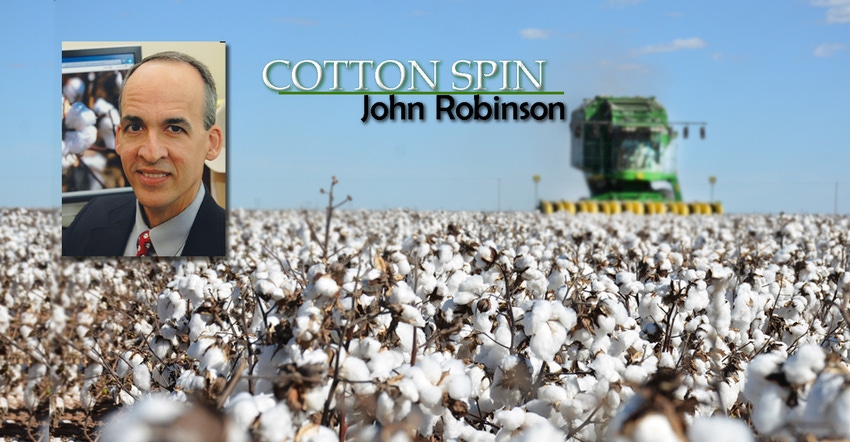
The April supply/demand projection from USDA saw a continuation of tightening in foreign and world cotton balance sheets for old crop cotton. On the supply side, world beginning stocks were 430,000 bales fewer, mostly in Vietnam (-300,000) and Central Asia (-150,000). World production was cut 280,000 bales month over month, mostly in Australia (-100,000) and Central Asia (80,000).
World imports were raised 940,000 bales compared to the March forecast, mostly in China (+750,000), Bangladesh (+200,000), Pakistan (+100,000), and Mexico (+50,000), less a 150,000 bale cut in Indonesia. Exports were also raised 940,000 bales month over month, mainly in Brazil (+500,000), the U.S. (+250,000), West Africa (+80,000) and Central Asia (+50,000).
Domestic consumption was raised 390,000 bales month over month, mainly from increases in China (+250,000), Bangladesh (+200,000), and Mexico (+150,000) less a 150,000 bale reduction in Indonesia. The bottom line of all these adjustments was a 1.13 million bale decrease in world ending stocks, month over month, which is fundamentally price supportive in the monthly adjustment. The resulting level of 93.46 million bales in world ending stocks continues to take the edge off the previously bearishly high level.
The U.S. cotton balance sheet reflected tightening from adjustments to the demand side. U.S. cotton production was not adjusted, which is a bit of a surprise since there is a 100,000 statistical bale discrepancy between USDA NASS (14.7 million) and USDA AMS (early April classings at 14.6 million. Note that the latter estimate assumes average running bale weights, which may not have been the case in 2020.
USDA raised their April forecast of U.S. exports by 250,000 bales, month over month, while U.S. domestic use was unchanged. Along with some adjustment to the “Unaccounted” (fudge factor) category, the bottom line amounted to a 300,000-bale cut to forecasted ending stocks, month over month. The direction of this adjustment and the resulting level of ending stocks are both price supportive according to history and economic theory. They probably helped stabilize the market after the March decline in ICE futures.
Tightening ending stocks for 20/21 also implies less carryover for the tightening new crop balance sheet. Considering the likelihood of high abandonment of 2021 acres, I think the supply picture will remain tight, with perhaps only 16 million bales of new crop U.S. production. That means 20 million or fewer total bales of supply, tight ending stocks, and the possibility of Dec’21 ICE futures bouncing around in the 80-cent range for a while.
For additional thoughts on these and other cotton marketing topics, please visit my weekly on-line newsletter at http://agrilife.org/cottonmarketing/.
About the Author(s)
You May Also Like




